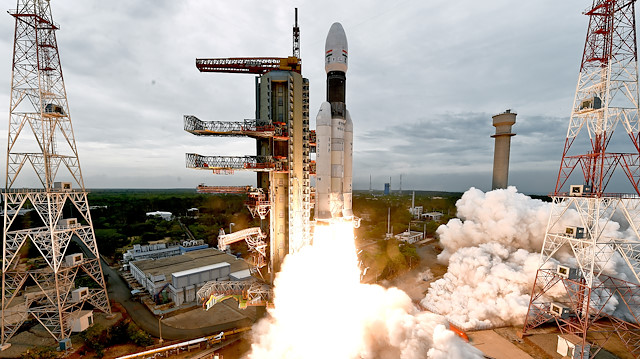
Hopes of establishing any contact with Chandrayaan-2, India’s Moon mission, have diminished as its 14-day deadline to contact lander Vikram ends on Saturday, said media reports.
The lander and the rover have a mission life of 14 earth days.
Indian Space Research Organisation (ISRO) chief K Sivan, however, pointed out that Chandrayaan-2 orbiter has performed efficiently and the mission was 98% successful.
According to News18.com, “Chandrayaan-2 orbiter is doing very well. Each of the eight instruments in the orbiter is doing exactly what we wanted. This mission was 98% successful. Our next priority is Gaganyaan,” Sivan said after arriving at Bhubaneswar Airport on Saturday.
Chandrayaan-2 is an Indian lunar mission that intended to boldly go where no country has ever gone before — the Moon's South Polar region.
Through this effort, the aim was to improve man's understanding of the Moon — discoveries that ISRO had said would benefit India and humanity as a whole.
Unfortunately, ISRO scientists lost contact with the Chandrayaan's lander, Vikram Lander, that was designed to execute India's first soft landing on the lunar surface only 69 seconds before the scheduled landing.
Vikram spacecraft apparently crash-landed. The lander's location has been spotted on the surface via thermal imaging, ISRO is racing against time to re-establish contact with Vikram and restore the lander-rover part of the Chandrayaan-2 mission.
ISRO has been consistently saying all possible efforts were being made to establish contact with the lander, though the hopes kept fading with the lunar night phase approaching, said News18.com.
The Chandrayaan-2 was launched on July 22 to reach near the moon’s south pole. It is a three-module spacecraft comprising an orbiter, lander and rover.
It was the first Indian expedition to attempt a soft landing on the lunar surface.














